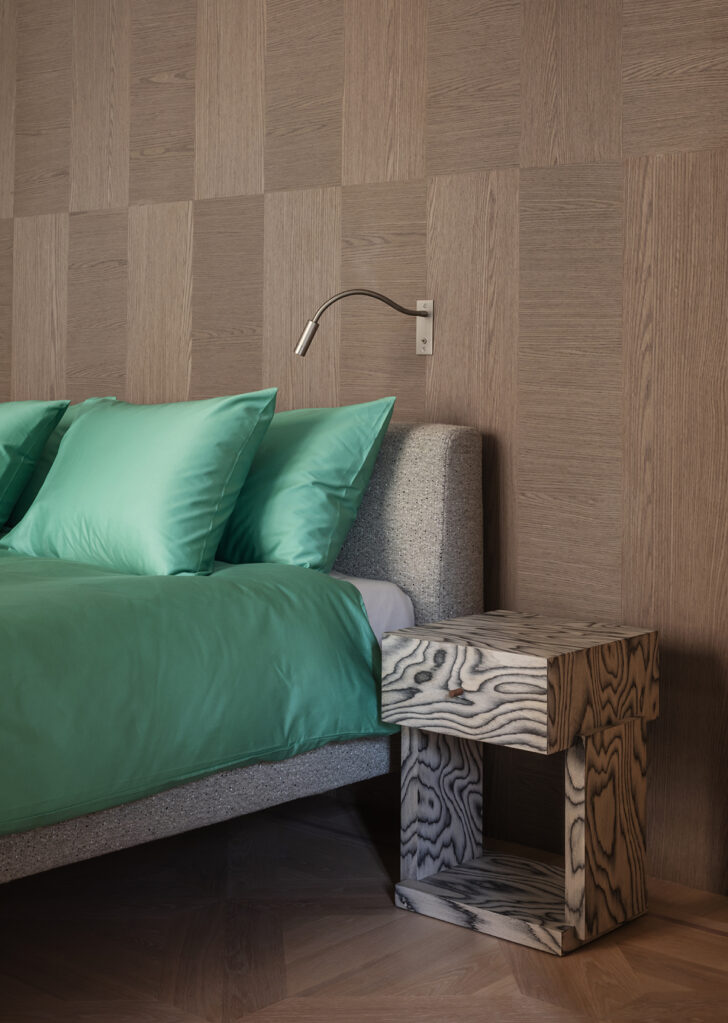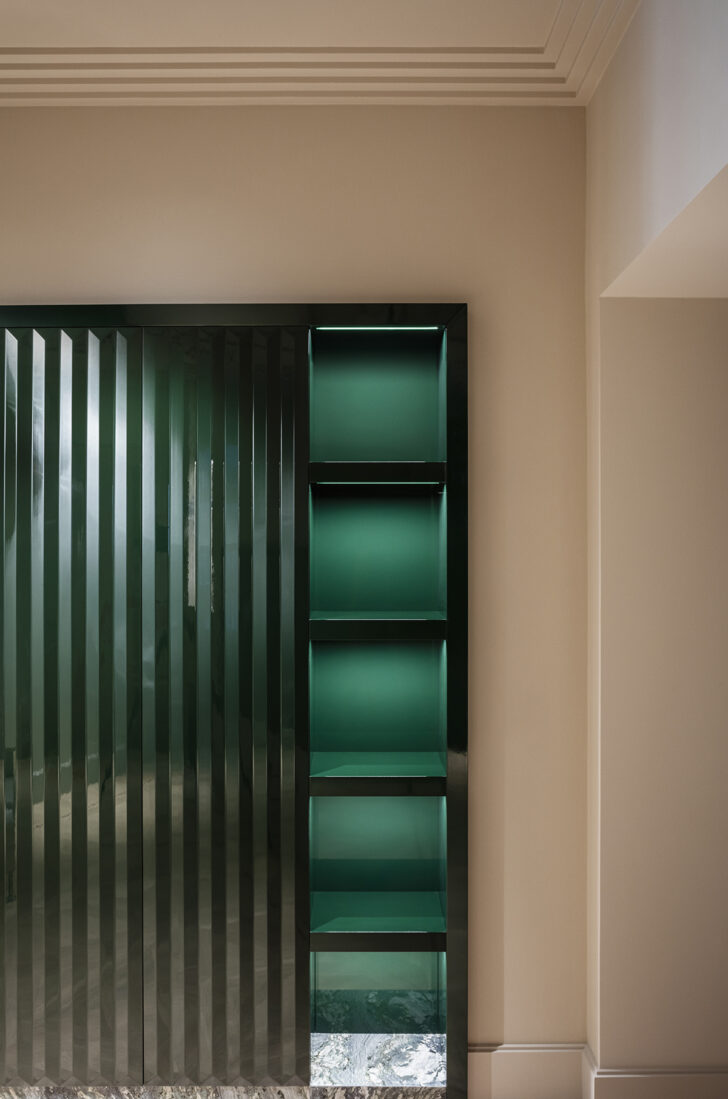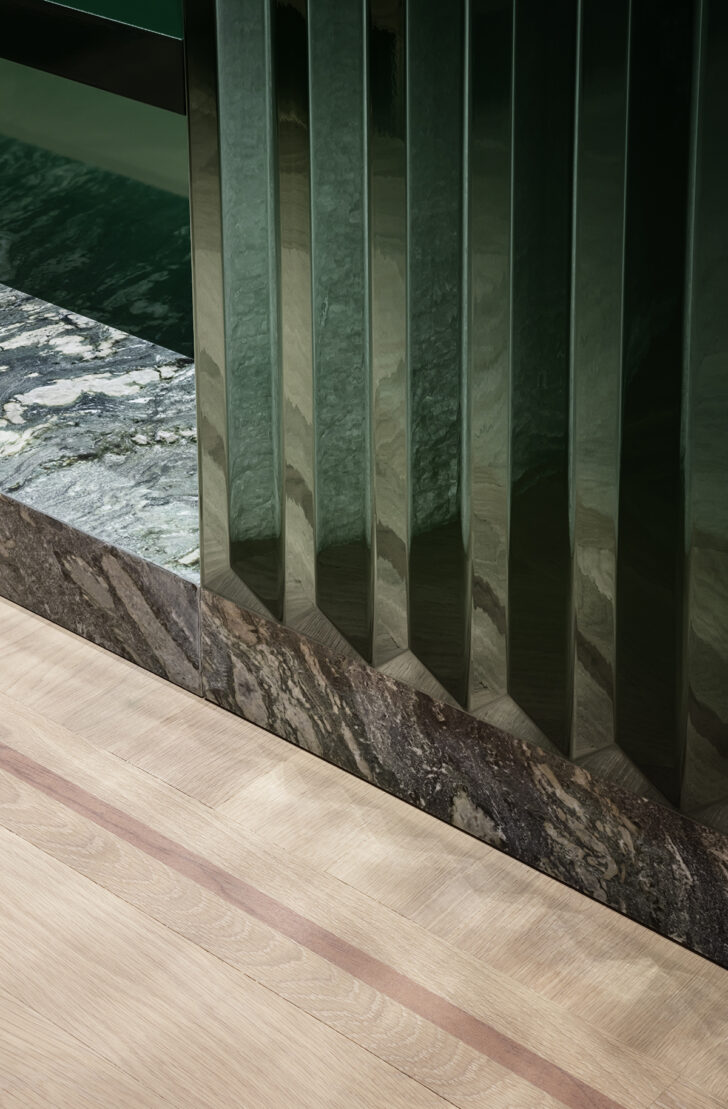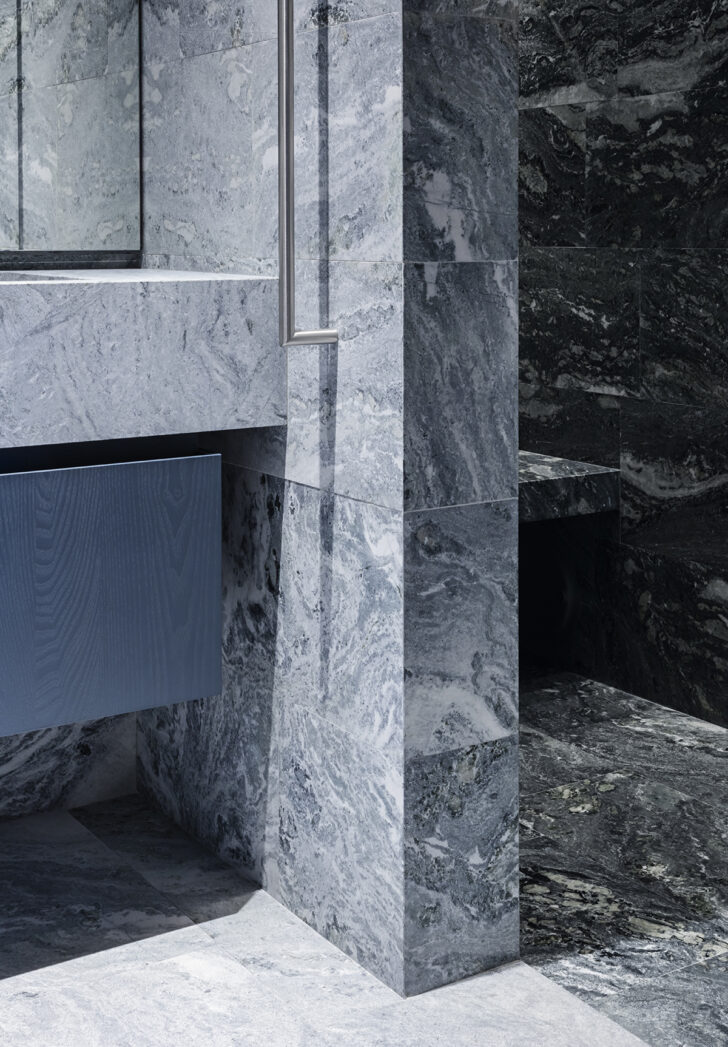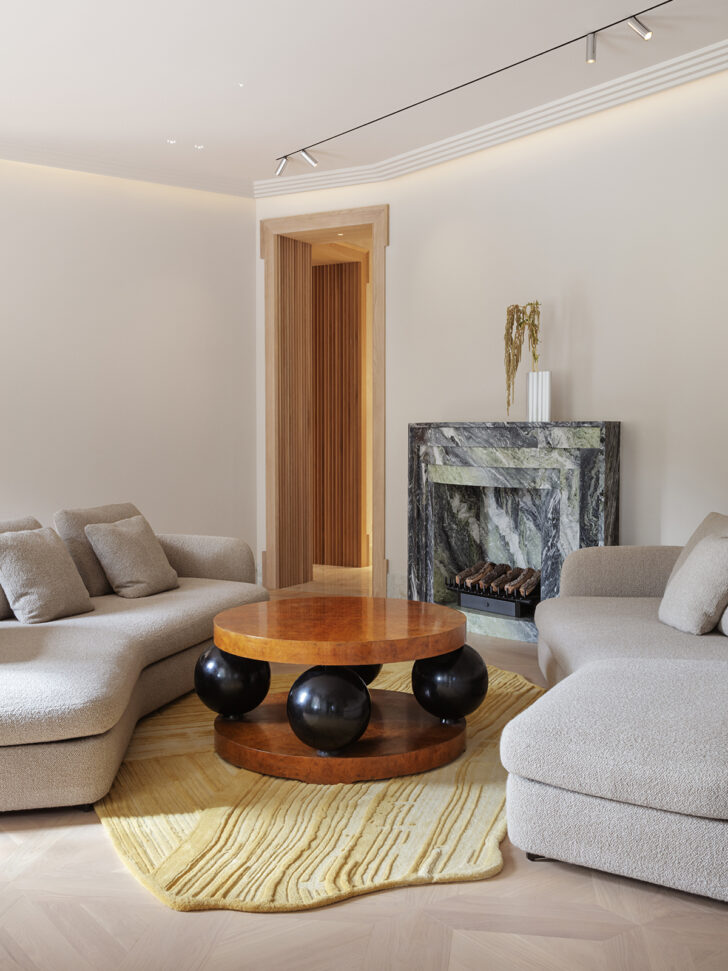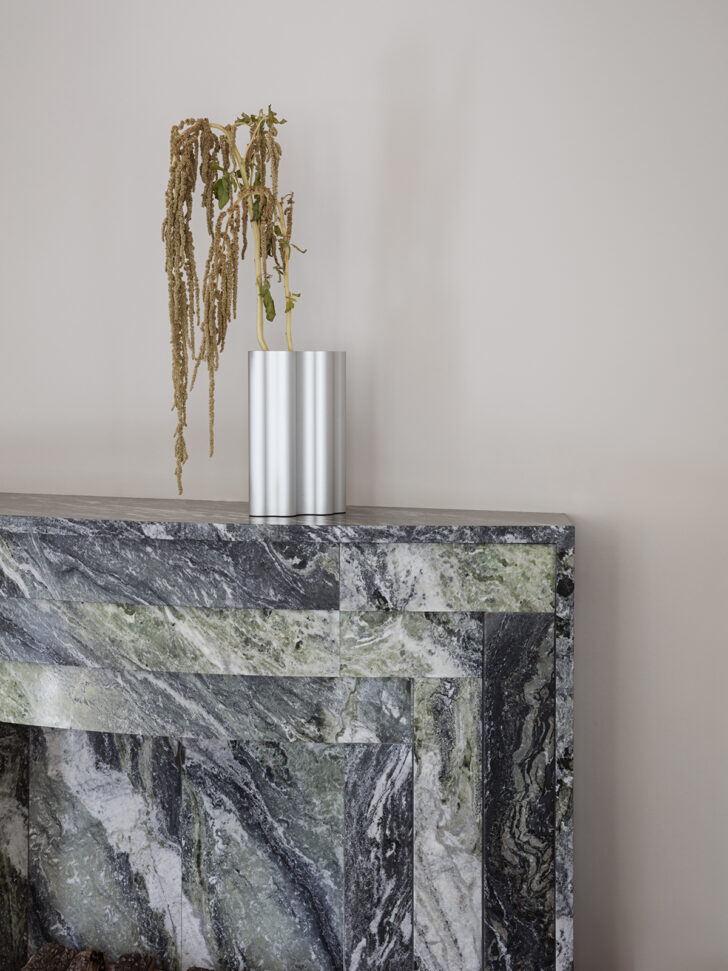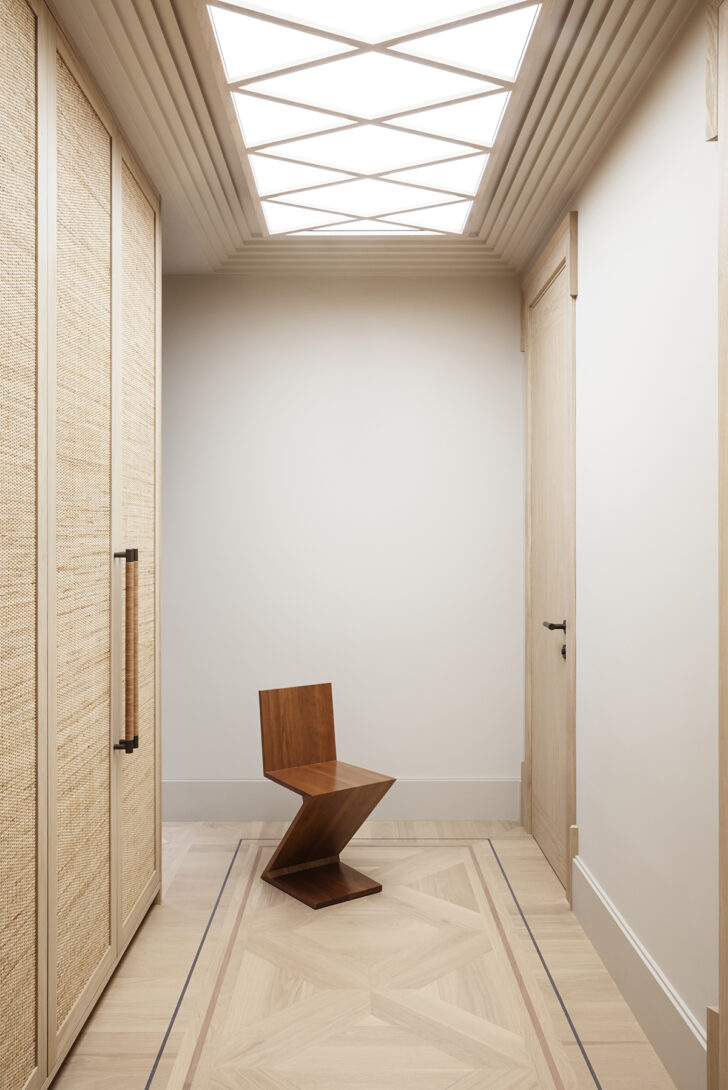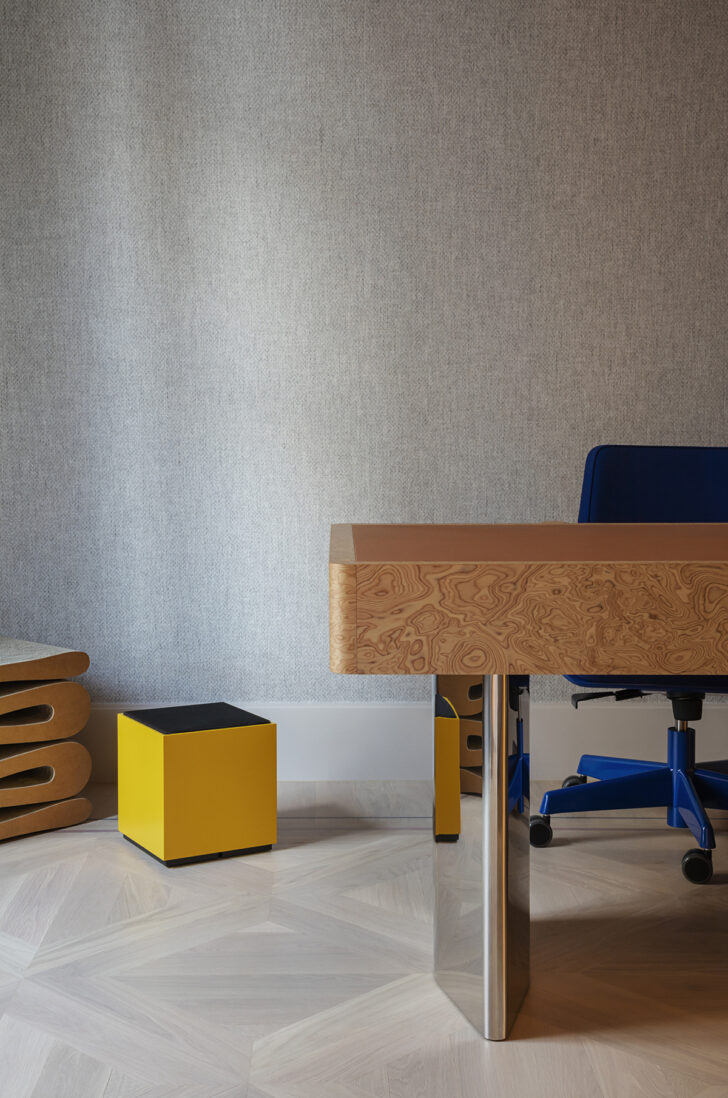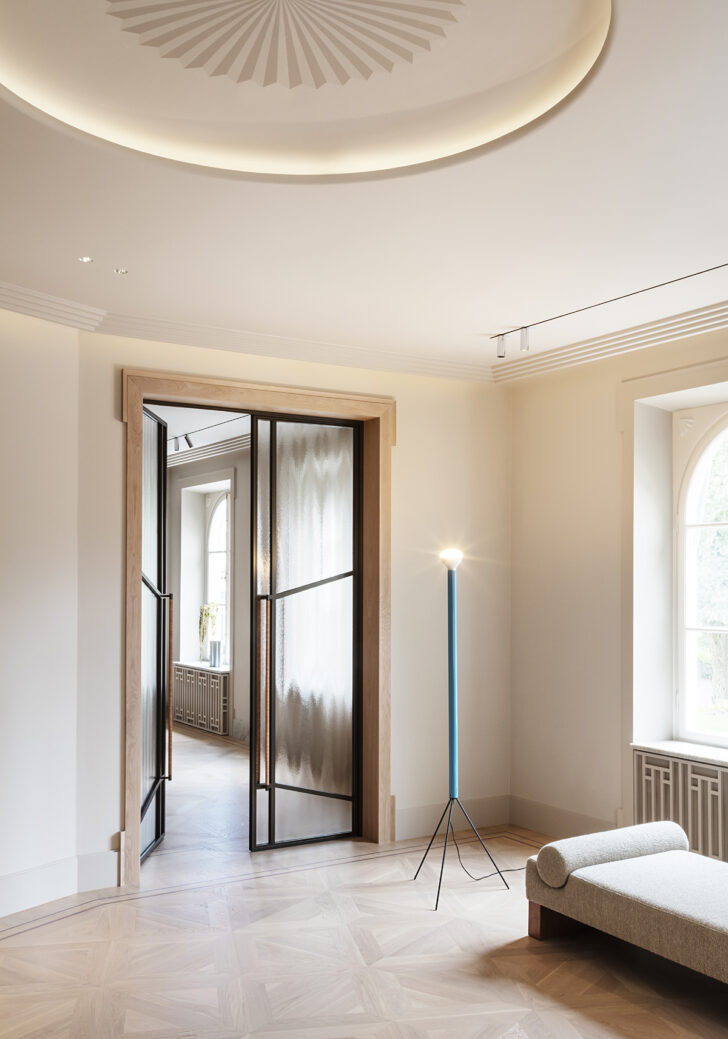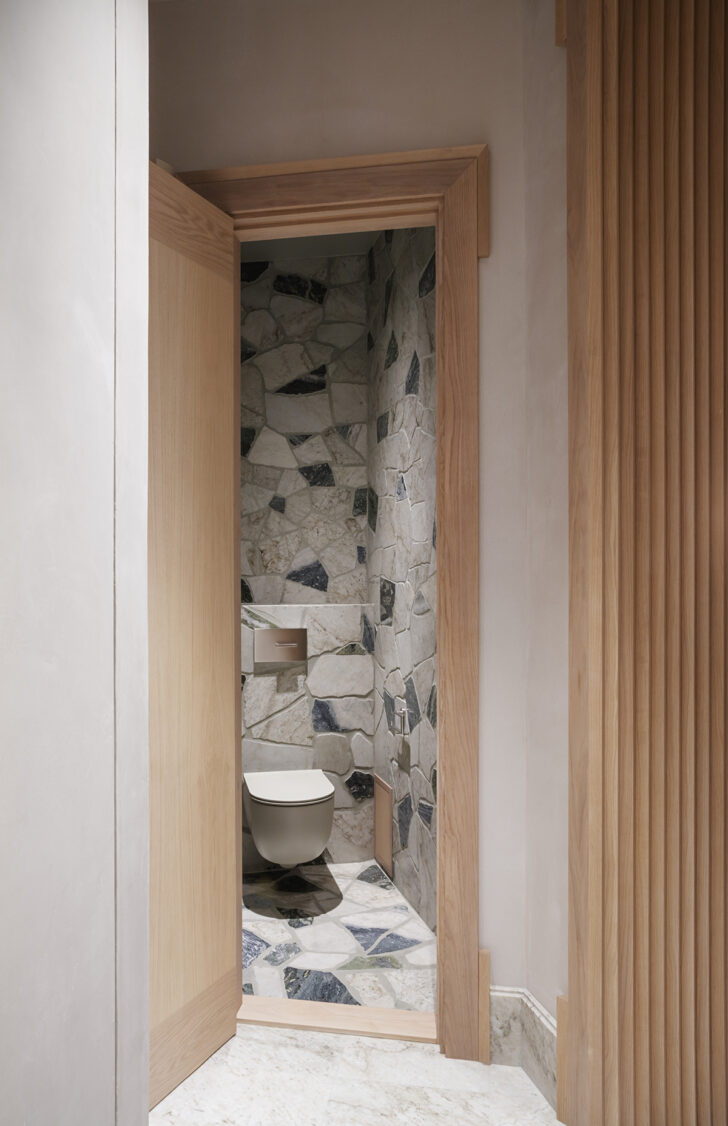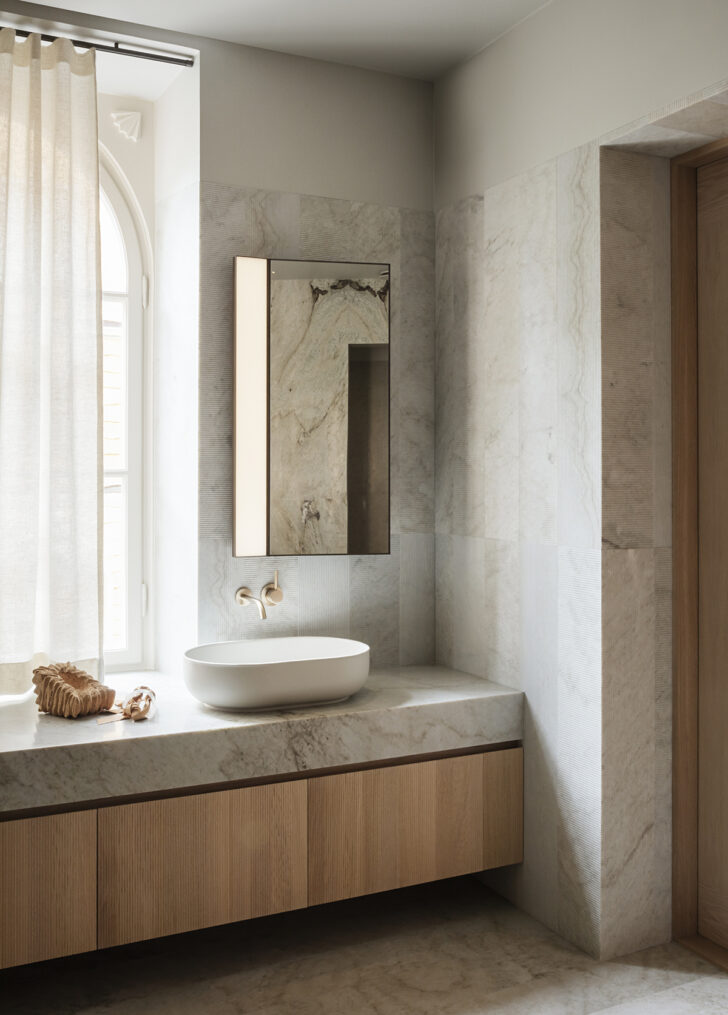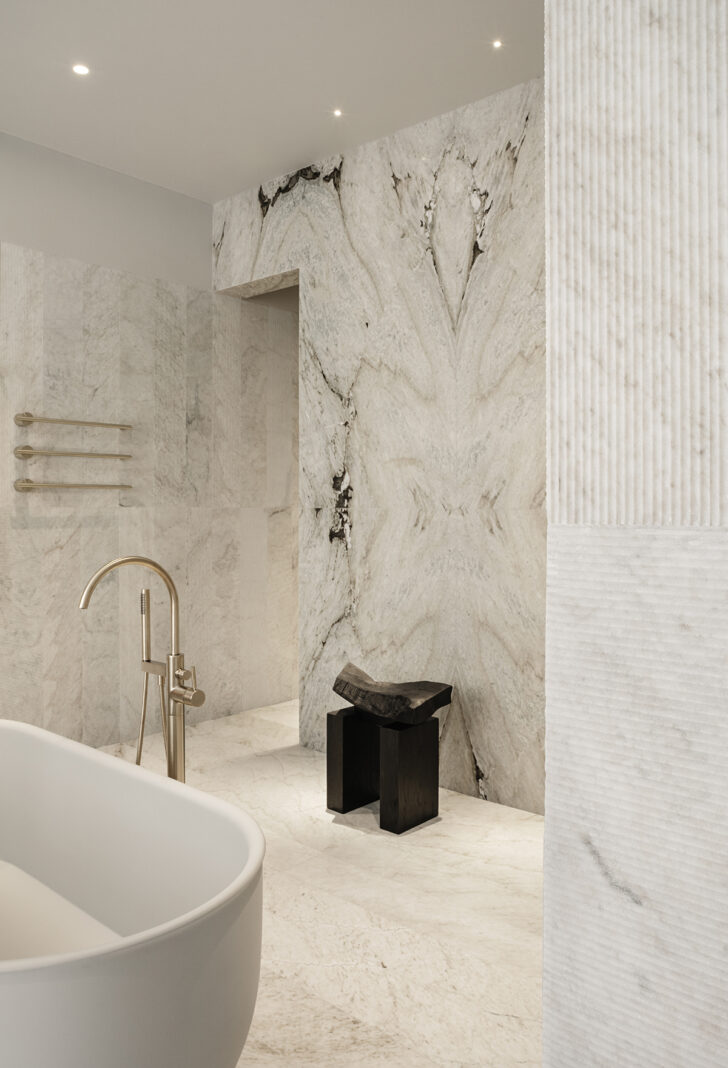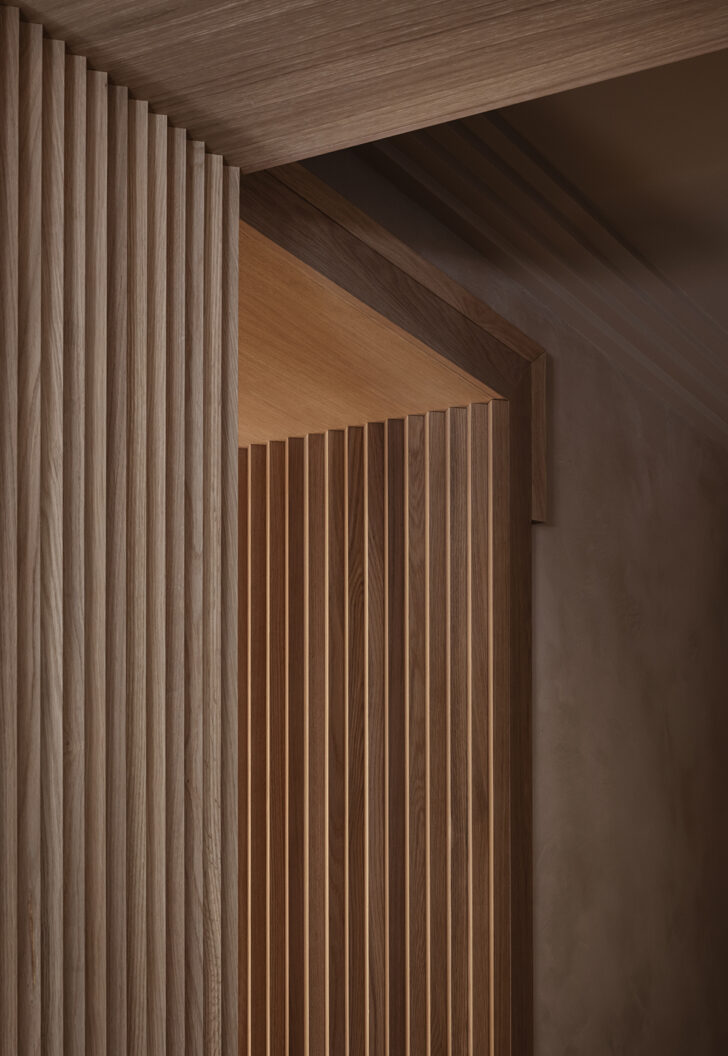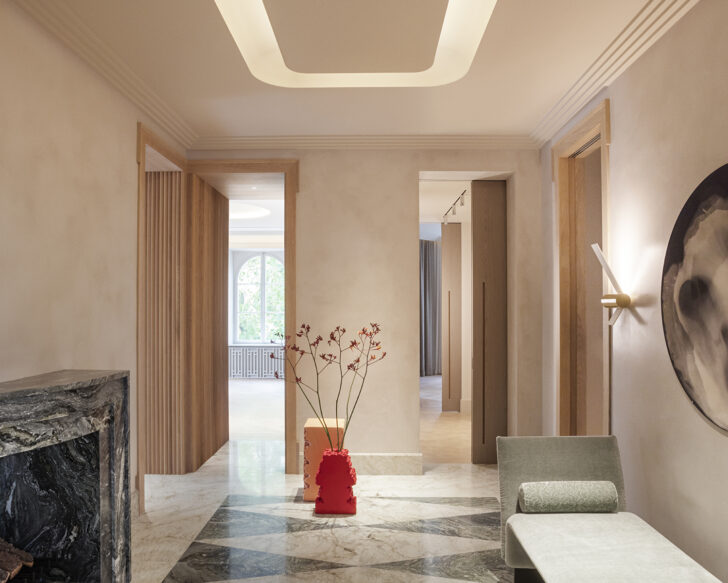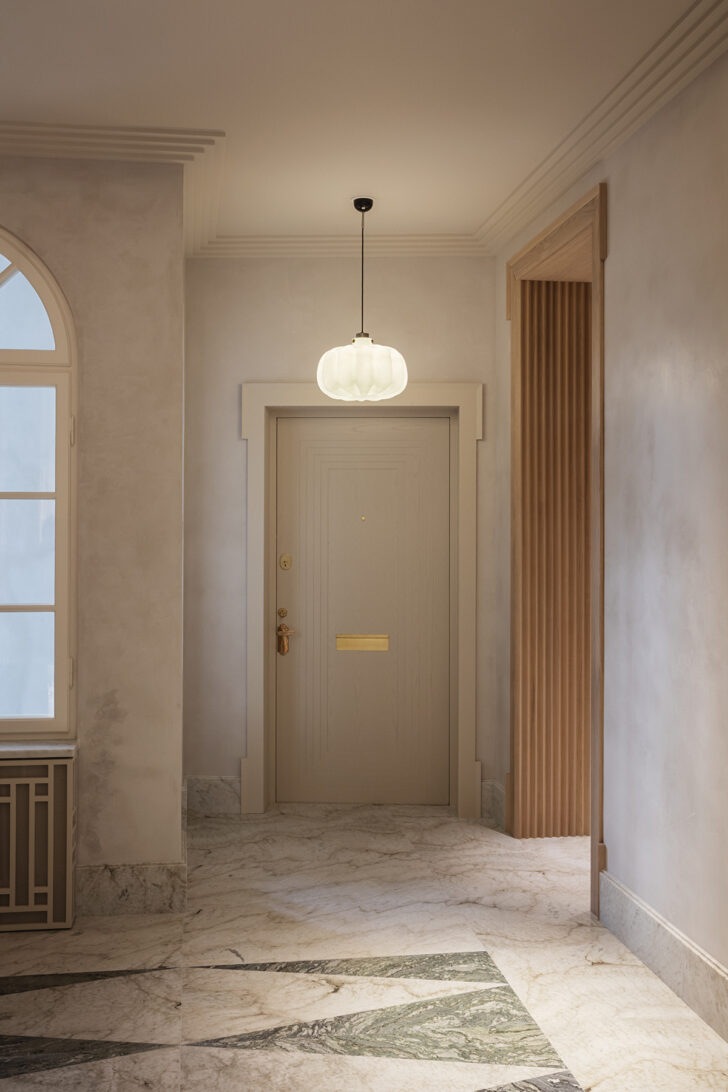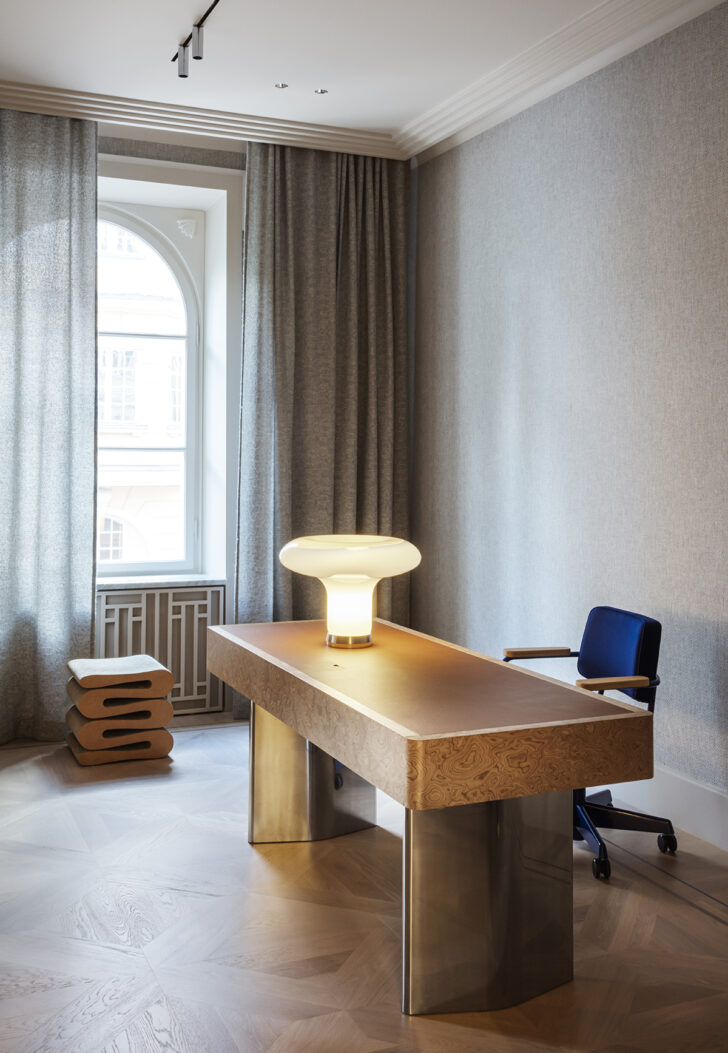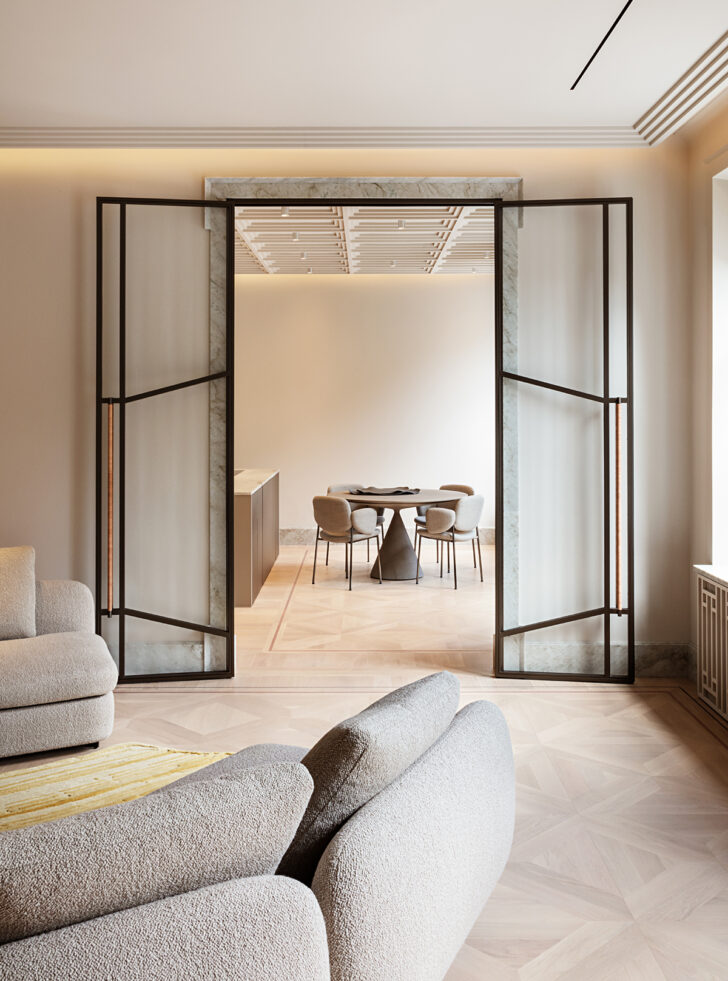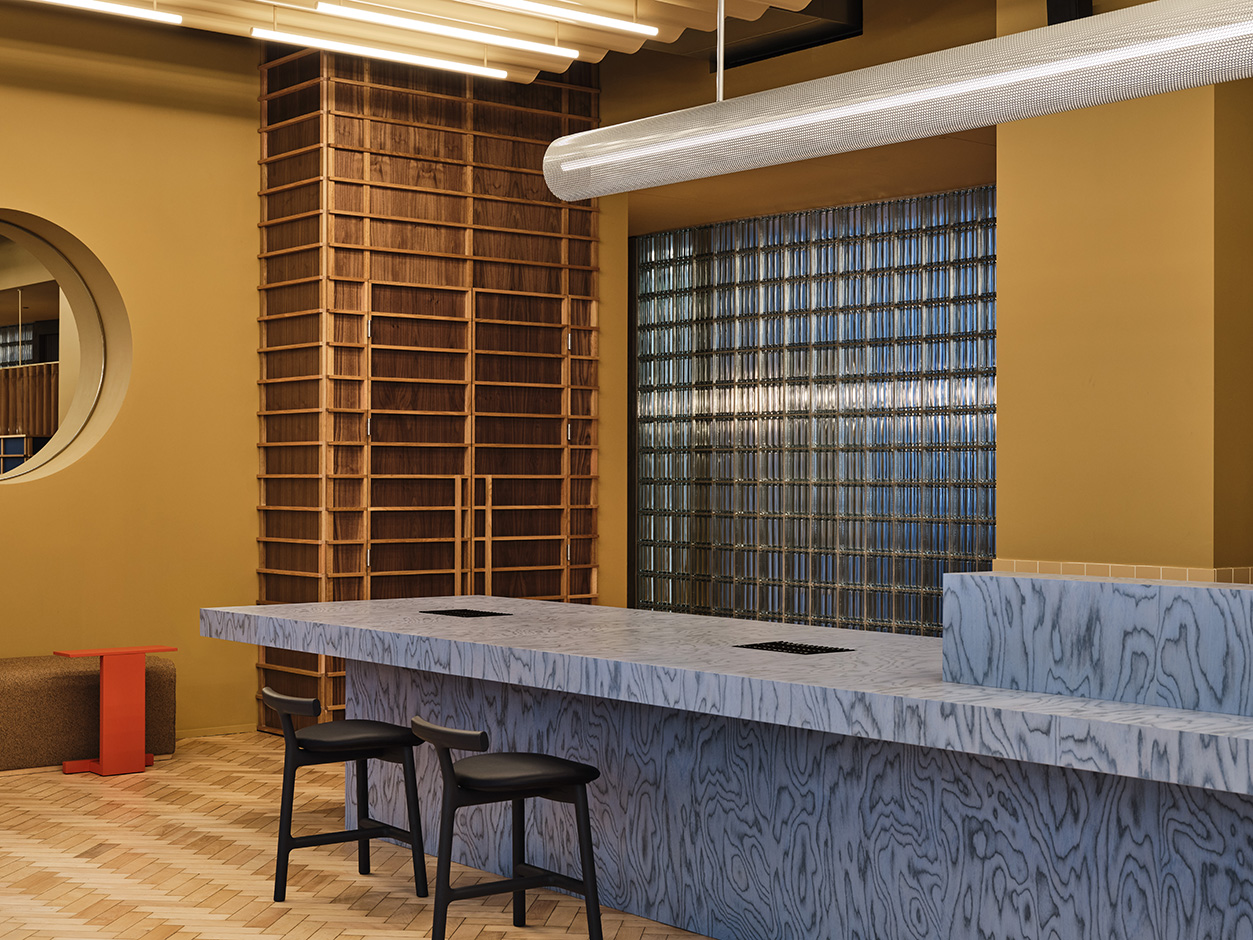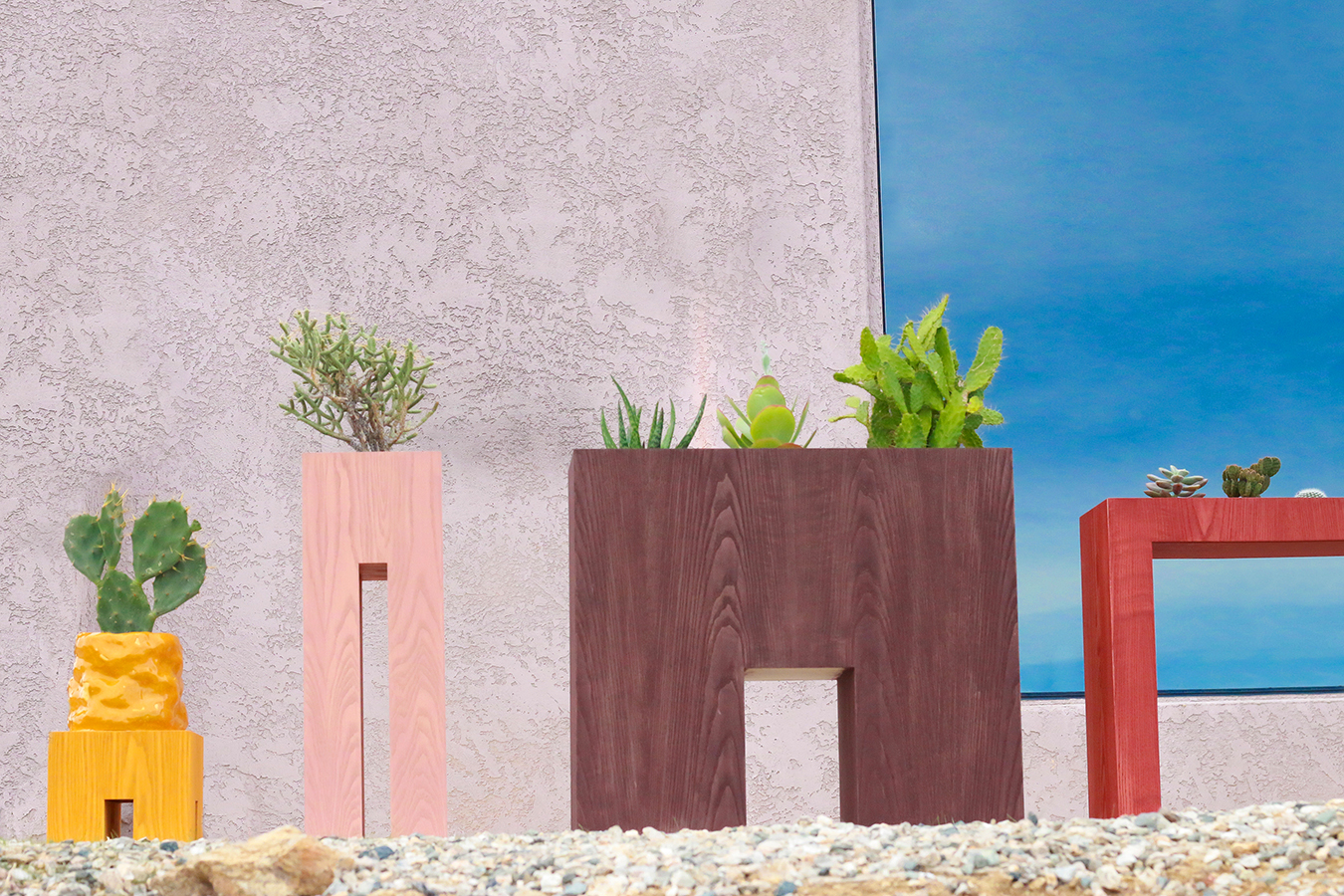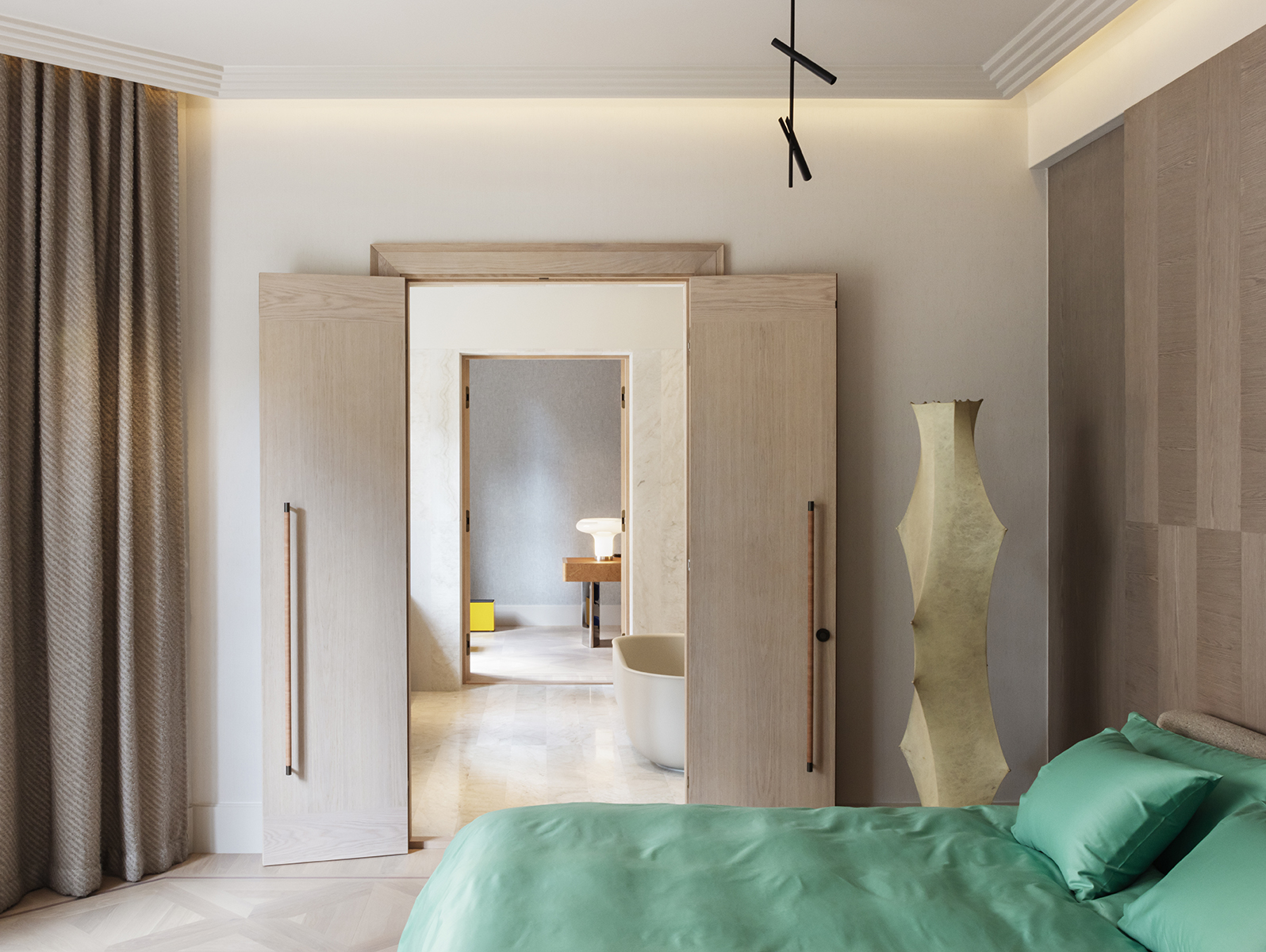
01.04.23
Interiors
Note Design Studio Returns a Stockholm Apartment to Its Former Glory (With a Contemporary Twist)
On today’s episode of “Why don’t we live here?!”: a 1920s Stockholm apartment reimagined by locally-based Note Design Studio. Situated in a splendorous historic building, the interior had sadly been stripped of its original character and details. But since the 3700 square feet of floor plan required a full functional rethink, everything from the flooring patterns, ceiling stucco profiles, radiator covers, and door and window frames were fair game to be restored or rethought.
What first appears to be a simple exercise in restraint is actually a richly complex one — layered, subtly detailed, and expertly executed. Take the pale parquet flooring, which features only slight variations in color, but just enough for the eye to trace its diagonal patterns. Or the fireplaces, surrounded by curved bands of blue-green Brännlyckan marble in two contrasting patterns offset from one another. And if marble’s your thing, check out the bathrooms. The largest three are each lined in a different Swedish-sourced variety, while the smallest is tiled in a patchwork of offcuts.
Big statements like the heavy living room coffee table (giant balls are the new tiny balls, etc etc) are just as impactful as the quieter details, including Art Deco-influenced joinery around the door frames crafted by a local carpenter. The soft, muted hues throughout the apartment allow the eye to be drawn to the brightly colored objects and elements scattered purposefully across the various spaces. Namely, a shallow closet lined in emerald green that could’ve been plucked straight from a Bottega Veneta store, and a cleverly color-matched bedspread in another room.
There’s also a handful of iconic vintage designs to be spied: a Gerrit Rietveld Zig-Zag Chair here, a Frank Gehry Wiggle Stool there, and a Castiglioni brothers’ Luminator lamp, recently rereleased by Flos in a pale blue hue. Through these objects that brim with personality, balanced with the faithfully recreated details, the Note team were able to pull off “an interior that might pass for the original – while still feeling contemporary and exceptionally comfortable today.”
